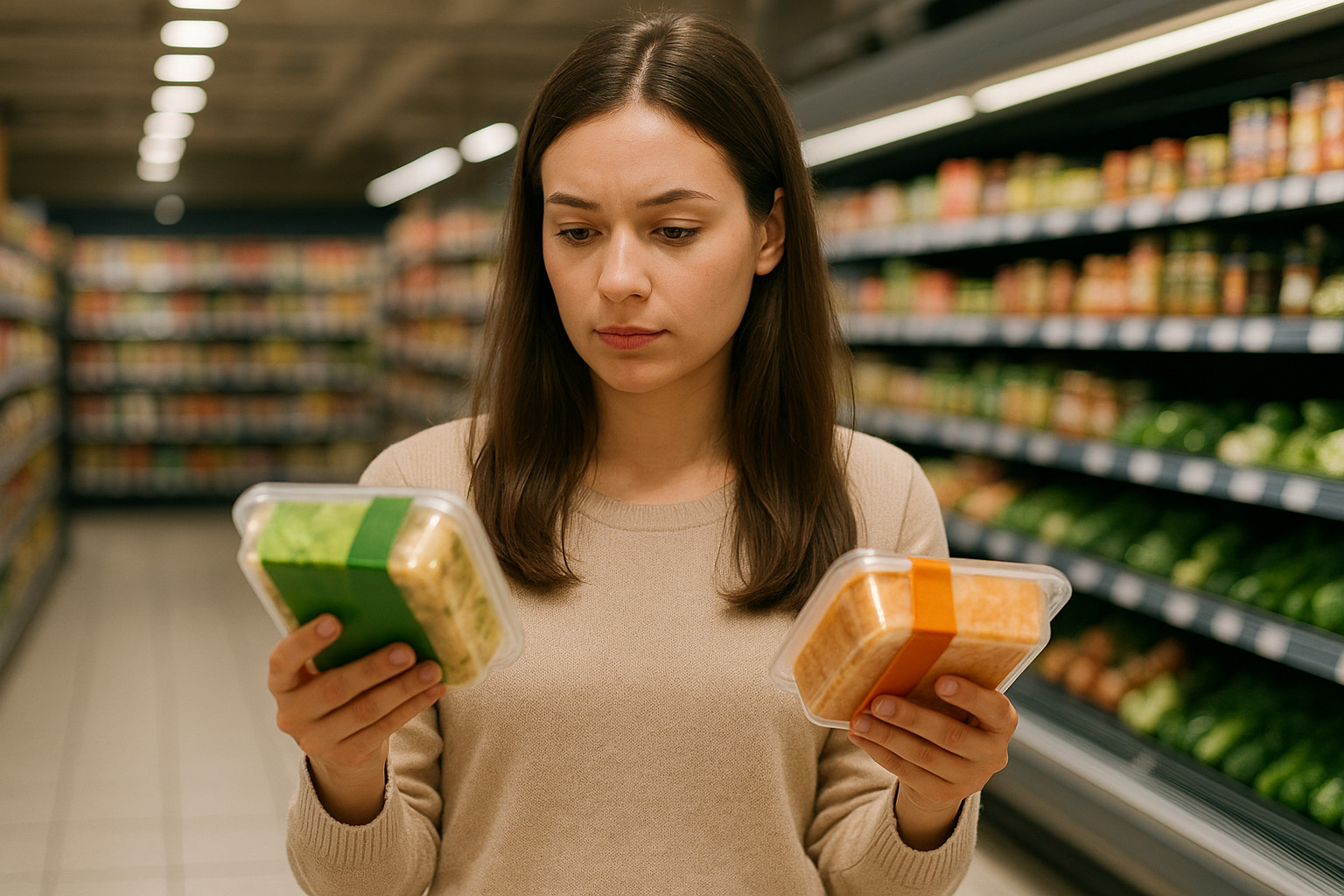2026 is expected to be a year characterized by volatility and more cautious consumer choices. Shoppers are evaluating every purchase with greater care, focusing on convenience, practicality, trust, and genuine product value. For the food & beverage industry, this means rethinking strategies and competitive models.
Key drivers shaping consumer decisions
The NielsenIQ report "Consumer Outlook: Guide to 2026" highlights a structural shift in consumer behavior. After years of economic crises, political instability, and inflationary shocks, uncertainty is no longer seen as an exception but as the norm. This new mindset, described as "intentional caution", pushes consumers to weigh their purchases far more critically, assessing the real value that each product and brand delivers.
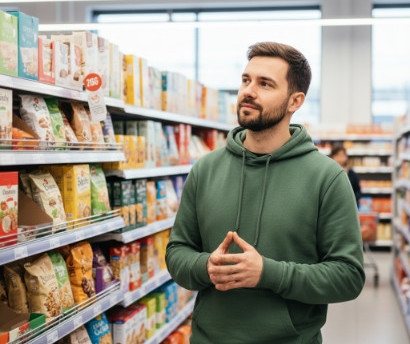 For the food & beverage sector, this translates into dealing with consumers who will not accept price increases unless they are justified by added value, and who reject generic claims or vague marketing messages. Competition now rests on the ability to prove value for money, tangible quality, and reliability.
For the food & beverage sector, this translates into dealing with consumers who will not accept price increases unless they are justified by added value, and who reject generic claims or vague marketing messages. Competition now rests on the ability to prove value for money, tangible quality, and reliability.
In such a scenario, companies cannot simply defend existing positions. They must also find ways to grow in an environment defined by inflationary pressure and volatile costs.
Consumers no longer respond to empty slogans about "quality", "tradition", or "innovation". They expect concrete evidence of how a product delivers real value.
Today's shoppers look for clear proof across the most critical purchase factors:
-
Price: affordability must be measurable against comparable alternatives, backed by objective, transparent communication.
-
Quality: traceable ingredients, certifications, and specific production methods - rather than generic advertising claims.
-
Sustainability: supported by concrete, verifiable data, ideally with third-party certification.
-
Innovation: practical solutions that enhance the user experience (waste-reducing packaging, smart formats), or new recipes and variants meeting specific needs - such as plant-based alternatives, low-sugar or low-salt options, or premium ranges with carefully selected ingredients - that deliver a clear advantage over what is already available.
Consumer sentiment and the macroeconomic context
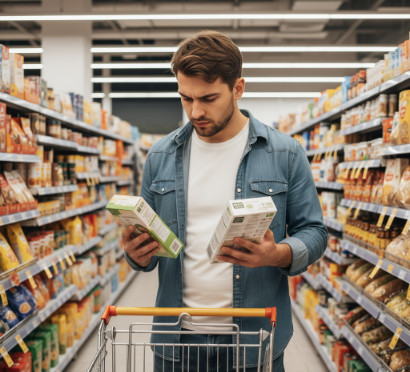 According to NielsenIQ, consumer confidence is showing signs of improvement, but the situation remains complex:
According to NielsenIQ, consumer confidence is showing signs of improvement, but the situation remains complex:
-
30% of global consumers say they are financially better off than a year ago, a slight increase compared to 2024.
-
At the same time, 32.8% report a worsening situation, highlighting growing polarization.
-
Essential expenses (staple food, bills, mortgages) are reducing the share available for discretionary spending, directly affecting demand for non-essential food & beverage products.
For food businesses - from producers to distributors and retailers - this leaves little room for further price increases. Competition will increasingly depend on the ability to demonstrate product value. This is particularly critical for premium products positioned in the mid-to-high price ranges.
Shifting consumption priorities
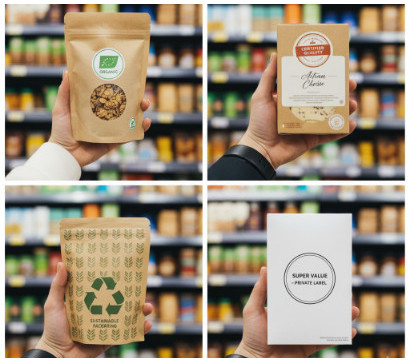 Looking ahead, new priorities are reshaping the relationship between consumers, brands, and retailers. Key factors to monitor include:
Looking ahead, new priorities are reshaping the relationship between consumers, brands, and retailers. Key factors to monitor include:
-
Intentional caution: purchases are more selective, and brand loyalty is no longer a given. Each product must clearly communicate its value to earn a place in the shopping basket.
-
Value beyond price: competition is no longer driven primarily by cost. What matters most is perceived quality, practicality of use or format, and above all, consumer trust in the brand or retailer.
-
Private label growth: store brands are no longer seen as second-class, low-cost alternatives. Today, private labels are tools for loyalty and conscious choices, increasingly associated with quality and retailer identity.
-
Retail Media Networks (RMN): digital platforms - websites, apps, and e-commerce - are becoming advertising and promotional spaces. They enable personalized offers and targeted communication, turning the digital point of sale into a key channel for consumer engagement.
-
Volatility-driven innovation: fluctuations in raw material prices are pushing companies to rethink recipes and processes rather than simply adjusting prices. This is leading to practical solutions such as alternative formulations, more sustainable packaging, and more agile production. The challenge is to maintain transparency and consumer appeal while avoiding the loss of desirable product traits.
- Trend-driven innovation: growth strategies in food & beverage are increasingly guided by consumer trends such as functional and healthy foods, wellness-oriented recipes, artisanal specialties and premium products, ready-to-eat convenience food, along with environmentally and socially sustainable options.
Trust, spending power, and problem-solving
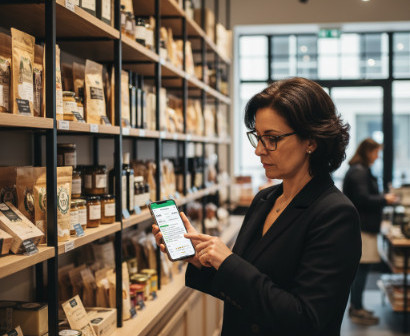 Looking forward, it is important to challenge some assumptions that no longer reflect market realities. One misconception concerns trust: improved confidence indicators (from surveys and systematic studies) do not automatically translate into greater willingness to spend. Positive sentiment does not always match the actual financial capacity of households.
Looking forward, it is important to challenge some assumptions that no longer reflect market realities. One misconception concerns trust: improved confidence indicators (from surveys and systematic studies) do not automatically translate into greater willingness to spend. Positive sentiment does not always match the actual financial capacity of households.
At the same time, consumers have not lowered their expectations. On the contrary, they expect companies to make everyday shopping easier by ensuring consistent product availability, providing transparent information on ingredients and prices, and offering fast, efficient services.
Omnichannel and emerging sales models
Shopping journeys are no longer linear. Consumers now move fluidly between physical stores, e-commerce, social media, and delivery apps, creating fragmented yet interconnected paths. One fact is clear: 9 out of 10 households shop across multiple channels, combining online and offline experiences. For brands and distributors, this means consistency and continuity are essential at every touchpoint.
Product launches are also evolving. Digital platforms are now strategic testing grounds: when a new product launched online shows a high repeat purchase rate, it provides a strong indication of its potential success in physical retail. Online data is becoming a valuable forecasting tool for assortment and in-store strategy.
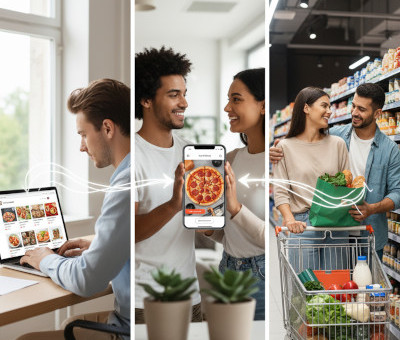 Retailers' digital platforms play a central role, integrating online sales, promotions, and advertising. They allow distributors to monetize digital channels while giving producers privileged access to purchasing data, enabling tailored communication and offers.
Retailers' digital platforms play a central role, integrating online sales, promotions, and advertising. They allow distributors to monetize digital channels while giving producers privileged access to purchasing data, enabling tailored communication and offers.
At the same time, new on-demand models are gaining ground: quick commerce, based on ultra-fast delivery supported by dark stores and dedicated logistics, and social commerce, where shopping is intertwined with content and social interaction.
For food & beverage companies, the challenge is not just to "be present" across multiple channels but to deliver consistent, integrated experiences that follow consumers wherever they shop.
Turning caution into opportunity
 Consumers who now see uncertainty as a permanent condition present a challenge for food & beverage businesses. Companies cannot limit themselves to reacting to external pressures - cost fluctuations, geopolitical dynamics, unstable supply chains. They must become proactive in solving consumer problems.
Consumers who now see uncertainty as a permanent condition present a challenge for food & beverage businesses. Companies cannot limit themselves to reacting to external pressures - cost fluctuations, geopolitical dynamics, unstable supply chains. They must become proactive in solving consumer problems.
This environment can be fertile ground for businesses that know how to innovate smartly, act with agility, and build strong strategic partnerships.
Innovation aligned with consumer trends
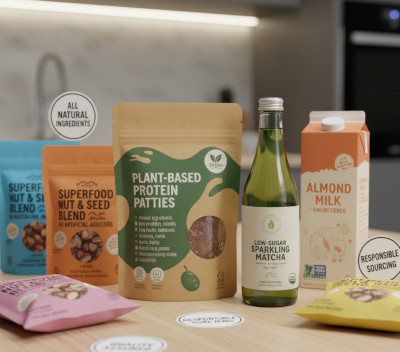 The most successful innovations will be those driven by real consumer insights - demand for wellness, convenience, sustainability, and recognizable ingredients.
The most successful innovations will be those driven by real consumer insights - demand for wellness, convenience, sustainability, and recognizable ingredients.
Improving ingredient quality also remains a key growth driver, with many private labels leveraging this strategy to deliver higher perceived value.
Agility in operations and decision-making
Agility means having processes and structures that allow rapid adjustments: reformulating a recipe, replacing an ingredient, or launching variants aligned with retail trends. Quick access to data is critical to act promptly on performance and adapt production and distribution as needed.
Strategic partnerships and collaborative ecosystems
 Supporting consumers - by solving problems and meeting different needs - requires collaborative relationships among producers, distributors, retailers, logistics operators, digital platforms, and technology providers.
Supporting consumers - by solving problems and meeting different needs - requires collaborative relationships among producers, distributors, retailers, logistics operators, digital platforms, and technology providers.
Such collaborative ecosystems enable solutions that no single player could deliver alone.
Transparency and sustainability
Consumers and regulators are also demanding greater transparency, sustainability, and traceability across supply chains. Environmental and social costs are increasingly shaping market perceptions and are now part of the value proposition. Packaging regulations, extended producer responsibility, and environmental policies are further pushing companies to design products with sustainability in mind from the outset.
What the data reveals about consumption
Compared to just a few years ago, the consumer landscape is far more diverse and segmented. Alongside price-conscious shoppers, large segments of the market now demand certified sustainability, premium ingredients, wellness-oriented formulations, or highly convenient solutions such as ready-to-eat or ready-to-cook meals.
The market is no longer uniform but a mosaic of behaviors and priorities that overlap and shift rapidly. For food & beverage companies, this means two things: the need to analyze segments carefully to identify real decision drivers, and the ability to adapt products, communication and channels with flexibility.
Despite this variety, some common trends are emerging: tomorrow's consumers will be more selective, guided by the search for tangible value, sensitive to price but equally attentive to quality, sustainability, and convenience - a profile that is already reshaping market priorities.



